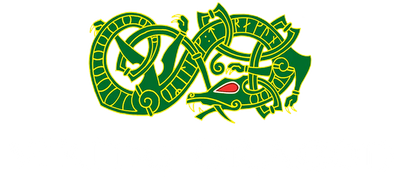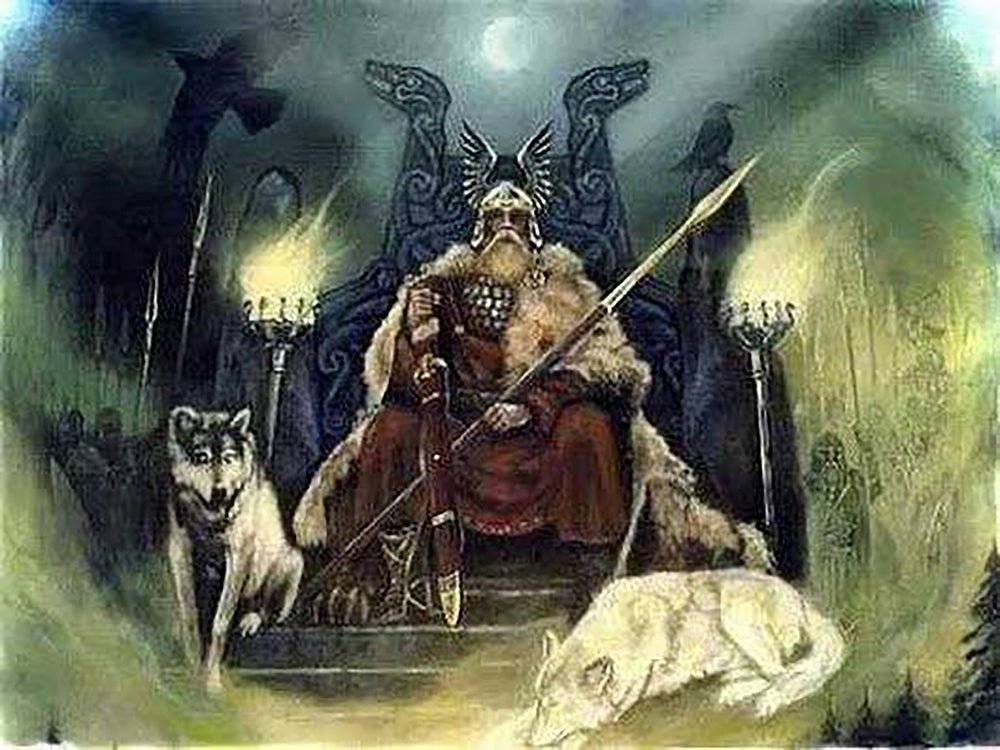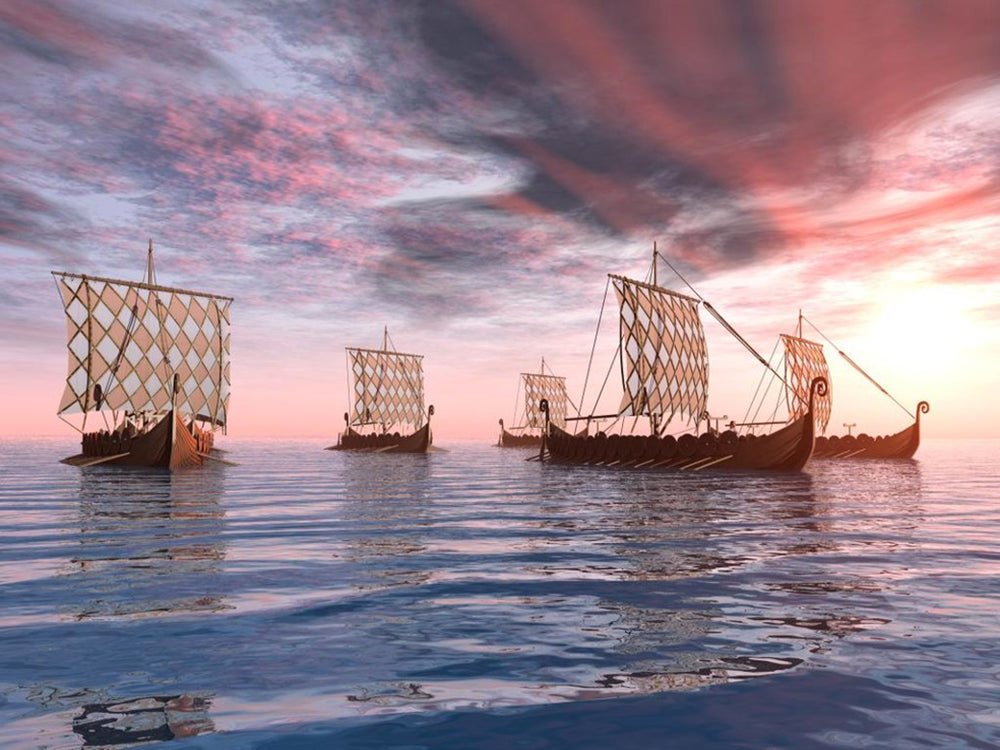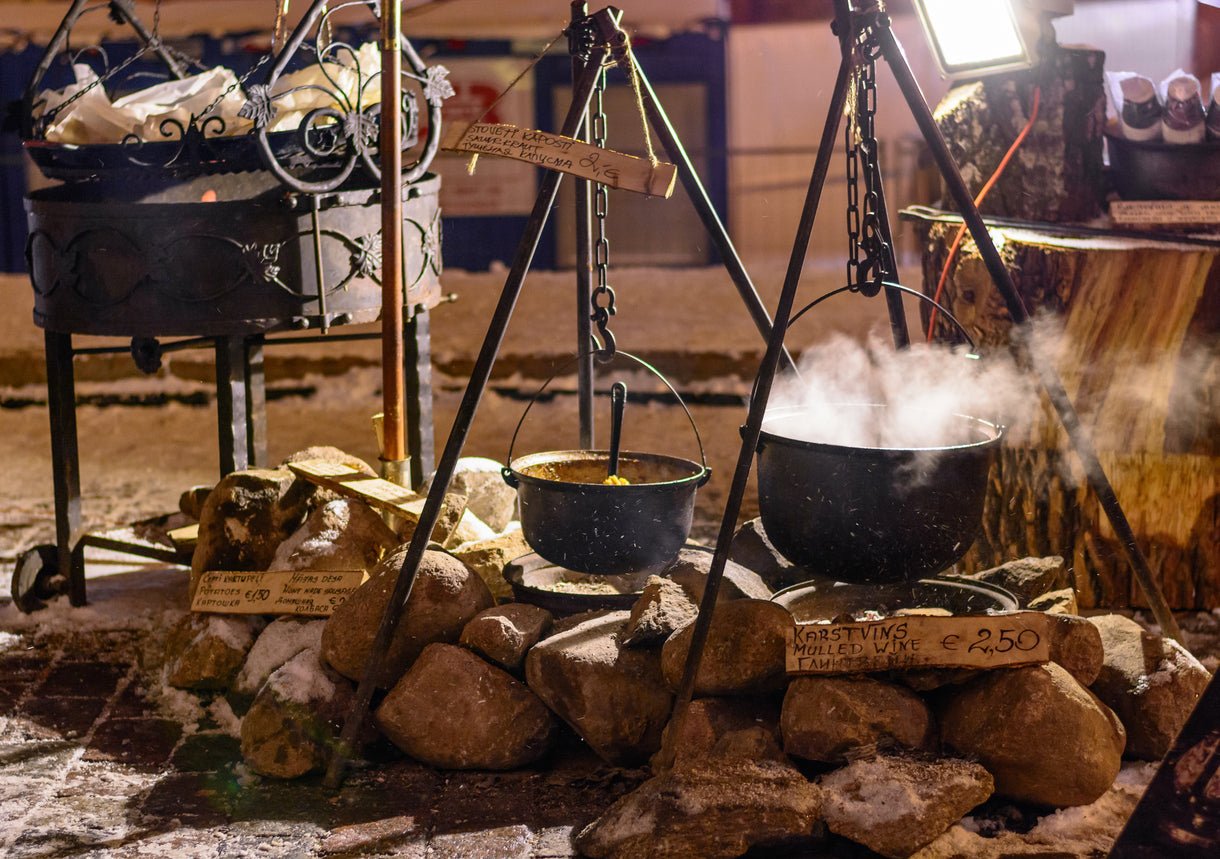The Animal Companions of Norse Gods
We know the Norse Gods for their epic strength and wisdom, but behind every deity is their animal companion. While you might associate the idea of spirit animals with indigenous North American culture, the Vikings had their own similar concept. In Norse mythology, Fylguir are animals that are connected spiritually to a human and can be used to send messages, act as guides, or warn of impending danger. Vikings conceptualised thought and personality as something entirely separate from a person’s physical form, so it was common practice for sharmans, priests or sorcerers to send forth Fylguir to represent themselves as animals.
Some of the most famous Fylguir in Norse mythology are those connected to the gods. These faithful companions served their masters by pulling chariots, sending messages and warnings, or even stepping in to be served up as a tasty meal.
Geri and Freki

Even before the dawn of the Viking age, depictions of Odin, the God of War, often showed him accompanied by two wolves. Named Geri and Freki, these were Odin’s first animal companions and ventured by the god’s side on his travels and onto battlefields. They are most often depicted sitting at their master’s as he watches the realms from his throne, acting as his protectors.
Geri and Freki were said to have been created by Odin long before humans first walked the Earth. In fact, some texts point to the two wolves playing a key part in the origins of mankind in Nordic folklore. It was said that Geri and Freki had nurtured the first human children, taking them into their pack and teaching them qualities of courage, love and loyalty.
Odin told the first humans to learn from their lupine foster parents, and as such, Wolves took on a highly symbolic role in Viking literature and belief. They were considered multifaceted creatures, representing both positive traits of loyalty and bravery, as well as negative chaos and cruelty. In folklore, they featured heavily in battle stores, being said to carry slain warriors to Valhalla. Seeing a grey wolf beside a battlefield was considered a good omen for Viking warriors, indicating that the god of war was acting on their behalf.
Huginn and Muninn

Despite being his first companions, Geri and Freki may come second place in the ranks of Odin’s most famous animal counterparts. In the 21st century, the crown is clamped tightly in the talons of Huginn and Muninn, the pair of ravens said to act as Odin’s eyes in Midgard. Legend had it that each morning the birds would all sound the world, taking in all the news and events of the day. Icelandic writer Snorri Sturluson tells us that when they return, ‘the two ravens sit on [Odin’s] shoulders and whisper all the news which they see and hear into his ear.’
With their names meaning ‘Thought’ and ‘Emotion,’ they’re a great example of Fylguir acting as a separate representation of an individual's consciousness. Vikings considered the mind to be something separate from the body, so it could be that Huginn and Muninn are supposed to literally carry Odin’s thoughts and emotions on their travels.
Like wolves, ravens held a great deal of symbolism for Vikings, and spotting one could be considered an omen. As carrion birds, ravens often appear on a battlefield or after bloodshed, so similar to sighting a grey wolf Nordic warriors may have interpreted this to mean that Odin was with them in battle. Due to their attraction to blood and decay, ravens were also frequent visitors after a sacrifice. This was also taken as a good sign that Odin had accepted the offering.
Tanngrisnir and Tanngnjóstr

It’s hard to think of a more powerful image than Thor being pulled through the sky in a chariot pulled by two flying goats. Tanngrisnir (meaning ‘tooth grinder’) and Tanngnjóstr (meaning ‘gap tooth’) were the God of Lightning's loyal companions, providing transportation, companionship, intelligence and even sustenance when food is running low.
The most famous story involving Tanngrisnir and Tanngnjóstr can be found in The Prose Edda, as Thor and Loki are travelling to the land of the Giants. The two come upon a lowly farmer’s cottage and ask if they can stay the night. They find that the farmer is extremely poor and doesn’t have enough food for his family, let alone two hungry gods knocking on his door. To thank his host, Thor slaughters his two goats and cooks them into a hearty feast for the farmer’s family to enjoy. He has, however, one stipulation: that they must not eat or damage the bones. The next morning, Thor uses his hammer to resurrect Tanngrisnir and Tanngnjóstr, and the two pull the chariot as if nothing had happened.
Though the details may have faded into obscurity, this story lives on in Scandinavian Christmas traditions, as a small straw goat is a common decoration in modern Nordic homes during the yuletide season.
The Gib-Cats

Tanngrisnir and Tanngnjóstr aren’t the only chariot pullers in the Norse animal pantheon. Freya, the goddess of fertility, was said to ride in a chariot pulled by two grey cats. In the Prose Edda they are called the ‘Gib-Cats,’ and it’s said that they were given to the goddess as a gift from Thor. Legend tells that the Lightning God was lulled to sleep by a beautiful melody one day while fishing, and, upon waking, set out to find whoever was singing the charming lullaby. He came upon two magical kittens, one of which was singing to itself in its sleep. Thor scooped up the cats and gave them to Freya to be her companions.
Cats were sacred to Freya, and Viking men and women came to see them as a symbol of fertility and femininity. It was thought good luck to be kind to wandering cats since this would win over the goddess’ favour. This gave rise to the phrase ‘she’s fed the cat well’ if a woman was experiencing good fortune, particularly if the sun shone on her wedding day.
Of course there are many more Norse gods that have animal companions, but we'll save that for another blog...



